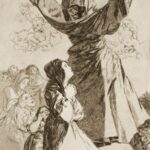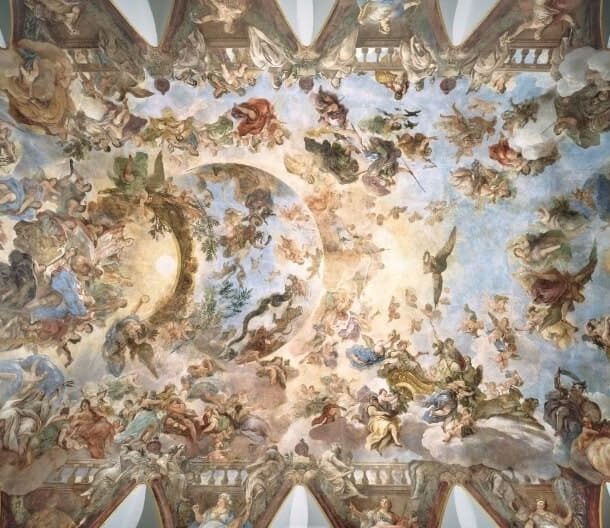
In this capriccio, Goya covers the trunk of a tree with clerical vestments, symbolising a preacher in one of his most common postures, with his arms wide open. His head is covered with a hood and before him kneels a woman and a mindless audience. Goya’s imagination expresses religious incredulity in this whimsy, and this time without trying to attenuate or disguise it with his usual skill. In this sense, the importance of the title shows how a tailor, through the patterns used to cut the dresses, manages, by disguising a tree trunk, to create the belief that it is a priest.
Collection: Images
Project: 3. Rural world and urban world in the formation of the European identity., 4. Family, daily life and social inequality in Europe.
Chronology: XVIII
Scope: Secondary Education, Baccalaureate, University
Resource type: Image
Format: Etching, drypoint and burnished aquatint on laid paper (306 x 201 mm)
Source: Museo del Prado (Madrid)
Language: Spanish
Date: 1797-99
Owner: Álvaro Romero González (Modernalia)
Identifier: G002140
Copyright: Museo del Prado (Madrid)
Abstract: Engraving by Goya alluding to the social importance of tailors that went unnoticed
Image
Tags






